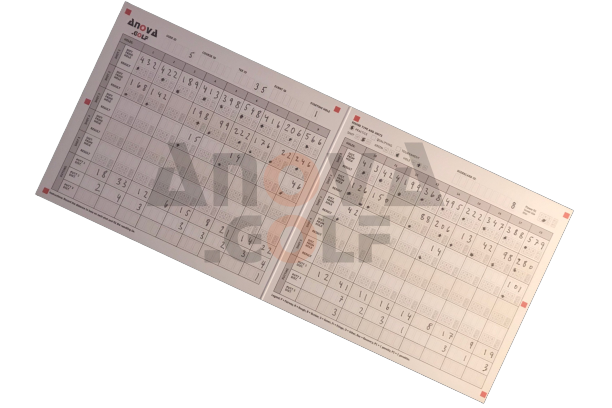Keeping golf stats on a scorecard is a great way to remember key pieces of information about your round. That information can later be used to calculate a variety of golf stats to help you identify what you did well and what you didn’t do so well. You have a few different options when deciding exactly how to keep your golf stats on a scorecard:
- Use a scorecard from the course that you’re playing, and use the extra rows to write down specific stats such as fairway accuracy, greens hit, putts, up and downs and sand saves. This is better than nothing, but it does limit you to those exact stats. What happens when you only collect information in the ‘already calculated mode’ is that you are limited to those exact stats. No further information can be deduced from those stats alone.
- Use a scorecard from the course that you’re playing, but write down information in a “raw” format. It’s super easy to take a scorecard from the particular course that you’re playing, but instead of writing down already calculated stats such as greens hit, fairways hit etc, which limit you to those particular stats. These “raw” details, such as the distance to the hole and the resulting lie, can be entered into an app like Anova, which can then calculate hundreds of different stats.
- [Recommended] Use an Anova.Golf Scorecard. This scorecard is designed to capture key data points that can be imported into your Anova.Golf database. The key here is to capture your golf stats in a “raw” format, which means that you record information about the distance you have to the hole and the lie of the ball. From those two data points, an app like Anova.Golf can deduce hundreds and hundreds of different statistical variables. Here is an example of a filled out Anova.Golf scorecard:

